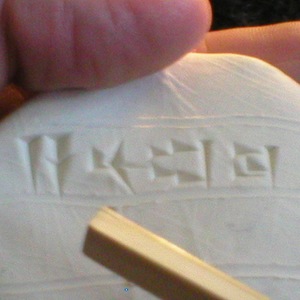Mobile Learning: Reflections in Progress
This post is a "during-course reflection" for "Mobile Learning," a course in the Advanced Studies Certificate: Distance Education Professional Development program at the University of Wisconsin (Madison).
It is written in Markdown on an iPhone 6+, using the Squarespace blogging app, Byword, and DropBox, as well as the public-bookmarking site Diigo.
The "guiding question" or "essential question" that I've brought to mobile learning is, "How might mobile devices make it easier to integrate reflection/activity on a course's subject matter with other elements of one's life, generating unpredictable possibilities for unexpected connections?"
Abstract: In a constructivist view of learning, knowledge is built, or constructed, through meaning-making activities that bring previous understandings into relation with new understandings. Learning is an irreducibly "creative" act: it is created via synthesis. Does the mobility of mobile devices make it easier to facilitate the regular integration of new understandings with the understandings (already) active in the other areas of one's life: family, play, work, etc.?
This short piece on "Connecting the Army to Digital Applications," while brief and summarizing, piqued my interest simply by its intentionality. What would it be like if seminary students, accomplishing their degree programs in real-world loci of practice (churches, non-profits or other non-government organizations, etc.), were provided class activities that could be accomplished "in the field" as opportunities presented themselves? How about their pre-program orientation, their advising, library usage, and so on? What if learners received explicit instruction on using mobile devices (from flip phones to smart phones) to do so? I have found myself preoccupied by a phrase used in this piece: that the goal is to foster "a persistent learning environment."
The "Basics" page of ADL's Mobile Learning Handbook and the Upside Learning "Quick Start Guide" ebook (edit: corrected click-through) have both helped me broaden my introductory understanding and get up on the lingo. For example, the concept of "push and pull learning" (intuitive enough to coders who use repositories like GitHub, but probably not to others) provides a kind of lever by which a fan of "just-in-time learning" to plug that set of pedagogical insights and practices into a mobile-friendly course design.
Integrating that concept of "push and pull learning" into my guiding question should become part of my final project for the course, along with the idea of "interactivity" in this piece by Jesse Stommel, noting that mobile devices facilitate an "easy move between reading and content creation."
My guiding question still makes sense to me as originally written. I found another student keen to provide Spanish-language learning resources to learners in the places where trying to use that language, and became interested in expanding on that idea (perhaps in Hebrew-languages courses that I teach occasionally).
